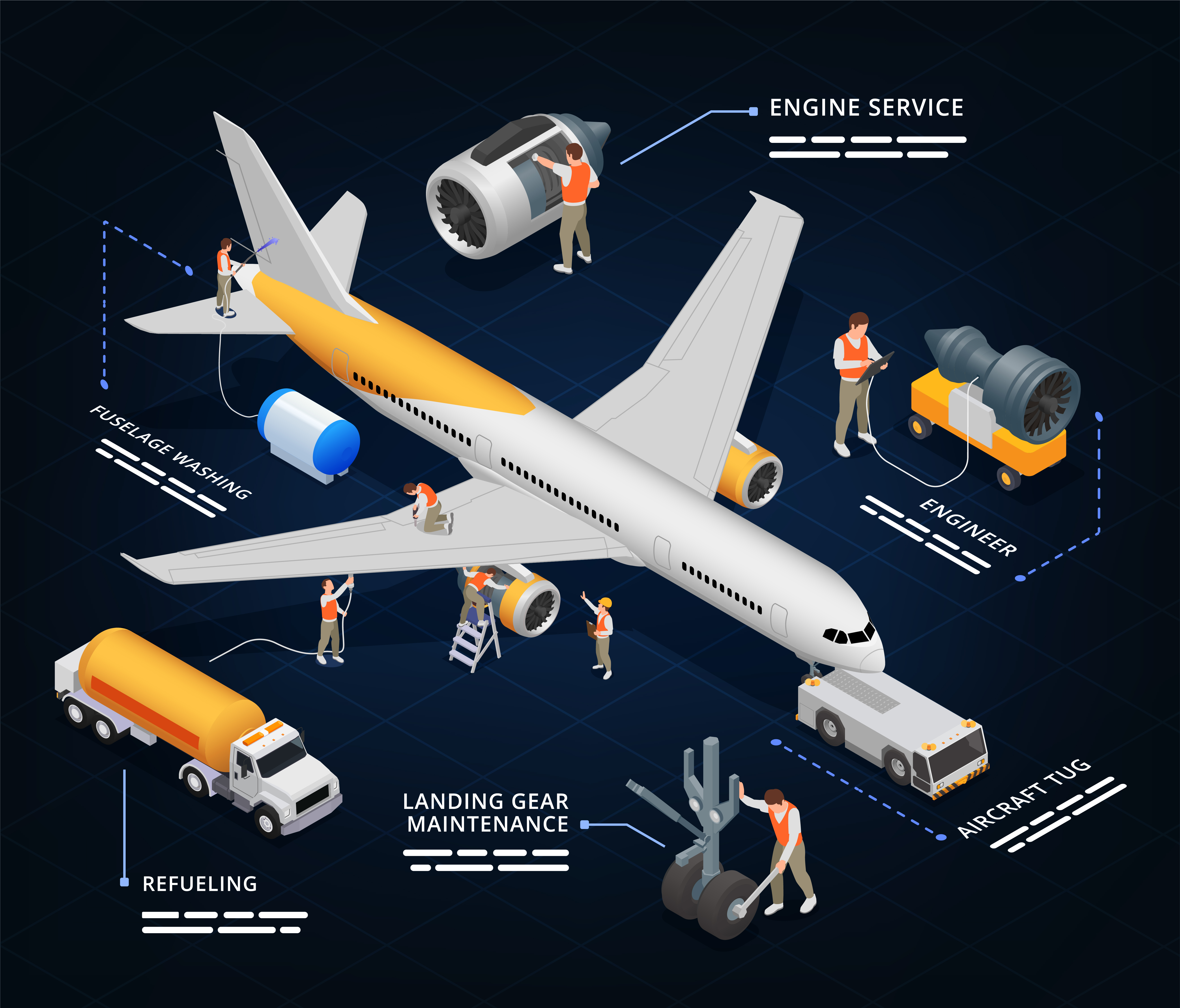The aviation industry relies on safety, efficiency, and timing. Aircraft need to stay in top shape while running on tight schedules. Maintenance plays a big part in this.
It keeps everything working smoothly and avoids delays or dangerous situations. Now, with artificial intelligence (AI), aviation maintenance is starting to change.
AI uses data and pattern recognition to help humans make better decisions. In aviation, that means fewer delays, fewer breakdowns, and better use of resources. AI does not replace engineers or technicians. It supports them.
How AI Supports Maintenance
Maintenance activities include many steps. From regular checks to repairs and replacements, it takes a team to keep planes flying. Artificial intelligence can help in all these areas. It speeds up processes, reduces human error, and spots problems earlier.
There are different types of maintenance in aviation. Each one has a specific goal. Some are planned, and some happen when something goes wrong.
Routine Maintenance Gets Smarter
Routine maintenance happens at set times. It includes tasks like checking fluid levels, cleaning sensors, or changing filters. These tasks are planned based on time or how much the aircraft has flown.
AI helps schedule routine maintenance more precisely. Instead of following general timelines, AI looks at real usage data. For example, if a plane flies in very dusty areas, filters might need more frequent changes. Artificial intelligence can track this and suggest the right time for service.
Read more: AI Object Tracking Solutions: Intelligent Automation
Preventive Maintenance with AI Support
Preventive maintenance aims to stop problems before they occur. This means checking systems for signs of wear or stress, even if they still work.
AI improves preventive maintenance by using real-time data from the aircraft. Sensors track things like engine temperature, vibration, and pressure. AI tools then look at this data for anything unusual. Even small changes can be signs of future failure.
With this approach, teams can take action before a small issue grows into a bigger one. It keeps aircraft safe and reduces the chance of emergency repairs.
Predictive Maintenance Changes the Game
One of the biggest advances comes with predictive maintenance. This is where AI really shines. It looks at past data to predict what will happen next.
Let’s say a certain type of pump usually fails after 1,000 hours of use. AI can check how long each pump has run and warn when one is likely to fail.
It doesn’t just count hours; it also checks for patterns. Maybe a pump failed early because of heat. If AI sees that same heat level again, it will raise a flag.
This kind of insight is much harder for humans to detect. Predictive maintenance saves time and money. It helps avoid delays caused by surprise breakdowns.
Read more: Propelling Aviation to New Heights with AI
Corrective Maintenance and AI Tools
Corrective maintenance happens after a fault. It includes things like replacing broken parts or fixing damaged wiring.
AI helps by speeding up fault detection. It can sort through large amounts of data from an aircraft’s systems. If a sensor sends an error code, AI can link that to known issues. It may even suggest the fix.
This makes the work of engineers faster and more accurate. AI can also help plan repairs and replacements. It checks parts availability, work schedules, and aircraft use. This helps the team make better decisions quickly.
Digital Inspections and Image Recognition
Aircraft need regular inspections. Engineers look for dents, cracks, or leaks. Traditionally, this is done by hand, which takes time and can be hard in poor light.
AI tools can analyse images of aircraft surfaces. Drones take high-resolution pictures. AI scans these for changes in shape or colour. It can spot damage more quickly and with more accuracy than the human eye.
This helps in both routine and corrective maintenance. It also creates records for future checks. AI compares current images with older ones to track wear and tear.
Read more: How Does Image Recognition Work?
Data Management for Maintenance Planning
Aircraft generate lots of data. Every flight logs information about how systems perform. AI can sort through this and pick out important details. It can find links between past faults and flying conditions.
This helps maintenance teams plan better. They can focus more on areas where problems are likely. This saves time and avoids unnecessary work.
AI also tracks parts across a fleet. It knows which parts are due for service and which have been replaced. This keeps maintenance logs accurate and up to date.
Safer and More Reliable Flying
Using AI in aviation maintenance improves safety. When aircraft are maintained more accurately, they are less likely to fail. AI also reduces human error by providing better information and faster analysis.
Reliable planes mean fewer flight cancellations and delays. Passengers have a better experience. Airlines save money by avoiding major repairs and keeping flights on time.
Training the Next Generation
As AI becomes more common, maintenance teams need new skills. Staff must know how to use AI tools and understand what the data means.
Training now includes how to read AI alerts and how to act on them. Engineers still do the hands-on work, but they have more support.
Airlines also invest in new systems. These include software for data collection and analysis, as well as digital platforms for work planning.
Read more: AI in Maintenance: Taking Care of Everything
How TechnoLynx Can Help
At TechnoLynx, we work with businesses to apply AI in the right way. In aviation, this means using data to support all types of maintenance. From routine checks to predictive alerts, our AI systems provide useful insights that help keep aircraft safe and efficient.
We design solutions that fit your current setup. We help gather data from existing systems and train AI models that suit your aircraft and teams. Whether you need support for preventive maintenance or help with predictive tools, we’re ready to assist.
We also provide training and long-term support. Our experts make sure your team understands how to use AI tools properly. We believe in working closely with our clients to build solutions that last.
AI is not a future idea. It’s already here, and it’s improving how aviation handles maintenance every day. With the right tools and advice, your operations can run more smoothly and safely than ever before. TechnoLynx is here to help you take that step.
Image credits: Freepik













